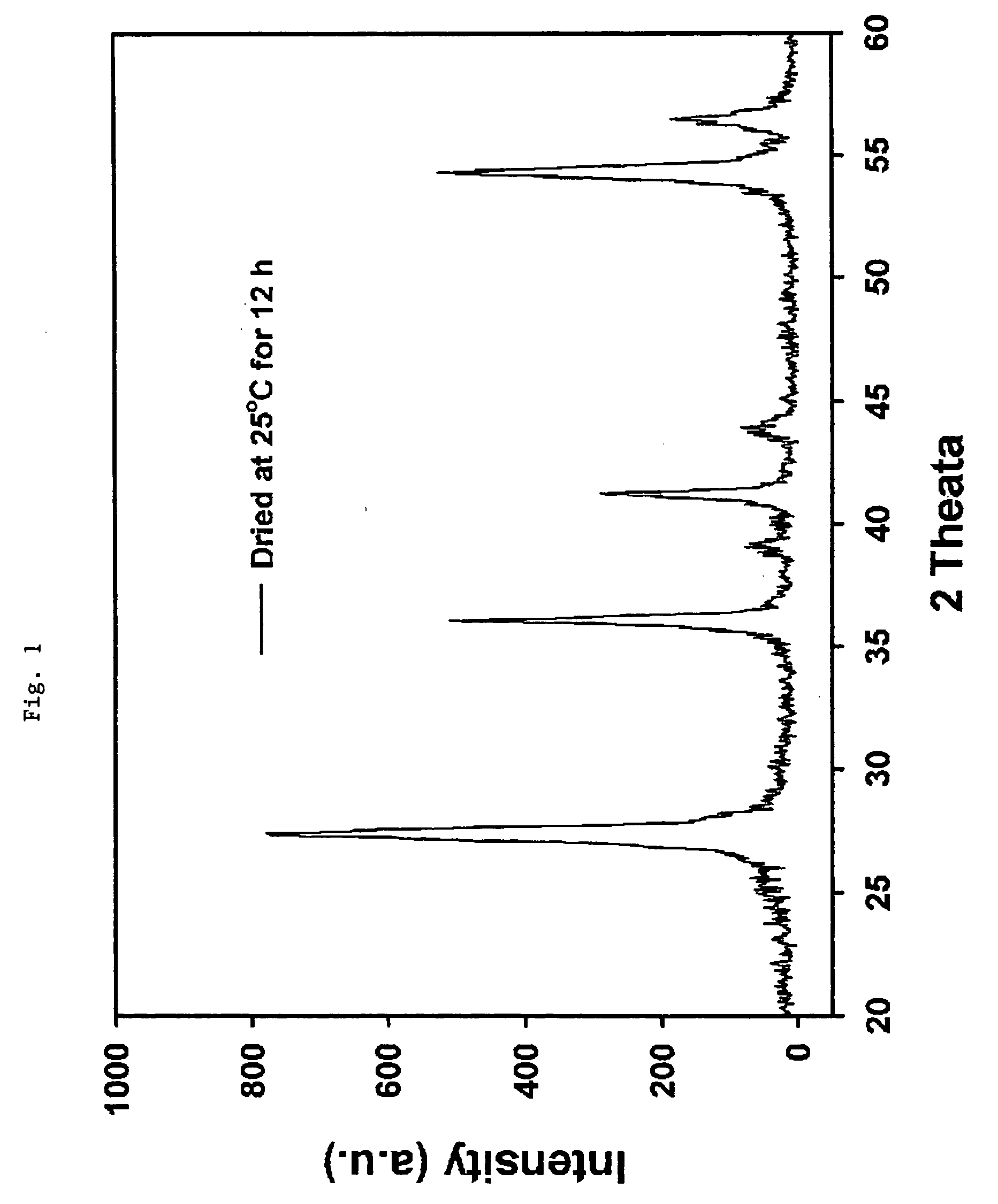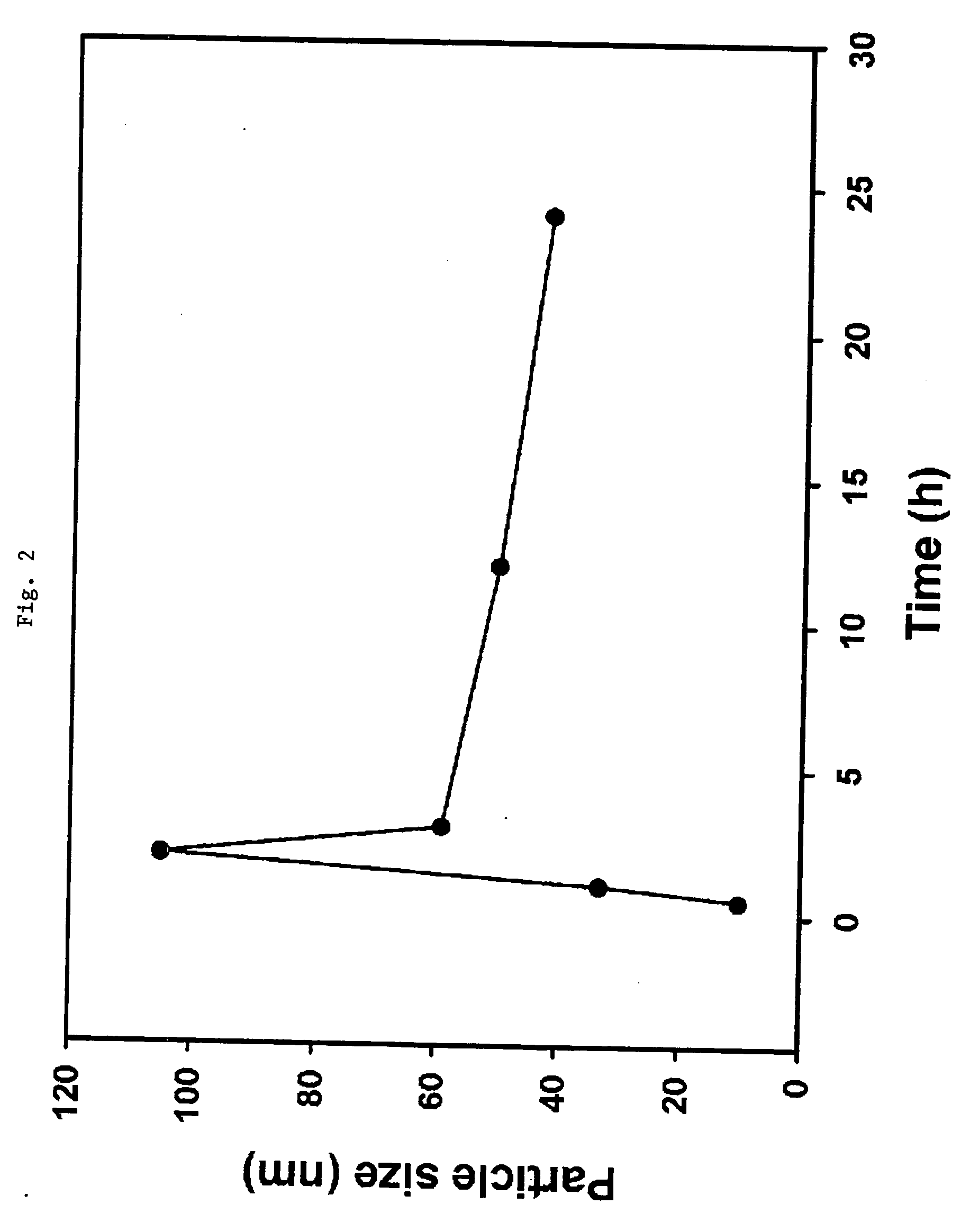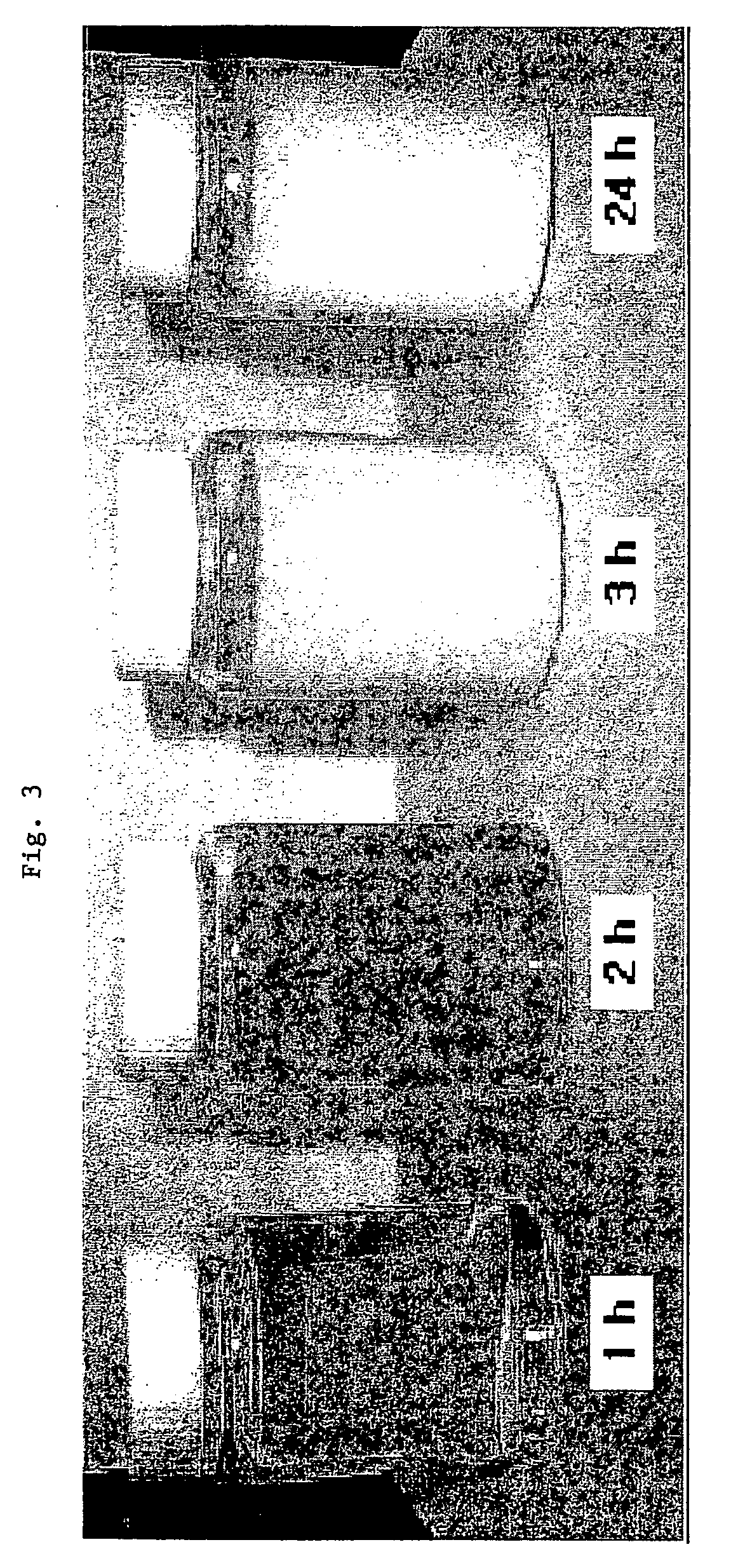Rutile titania nano sols and process for manufacturing the same
a technology of titania sol and nano sol, which is applied in the direction of titanium compounds, zirconium oxides, oxygen/ozone/oxide/hydroxide, etc., can solve the problems of difficult to control the reaction, the concentration of titania sol thus manufactured becomes too low, and the growth of rutile crystalline nano particles is difficul
- Summary
- Abstract
- Description
- Claims
- Application Information
AI Technical Summary
Problems solved by technology
Method used
Image
Examples
embodiment 1
Preferred Embodiment 1
[0024] A mixed solution of deionized water and hydrogen peroxide (35 wt. %) is made by mixing them at a mole ratio of 10:1 in a 250-ml Erlenmeyer flask. 0.01 mole ratio of TTIP with respect to that of hydrogen peroxide is added to the mixed solution and stirred for 30 minutes. An aqueous solution of red-orange transparent peroxotitanate is manufactured. The flask is placed on an oil bath of which temperature is adjusted in advance to 120° C., and the solution is refluxed for 12 hours in order to manufacture a titania nano sol. The sol thus manufactured is vacuum-dried with a 0.02-μm membrane and dried at a room temperature for 12 hours to obtain its powder form. As a result of x-ray diffraction analysis of the powder, it is shown that the crystal size is about 12.07 nm, and that greater than 99% of the powder is in the form of rutile crystals.
embodiment 2
Preferred Embodiment 2
[0025] A mixed solution of deionized water and hydrogen peroxide (35 wt. %) is made by mixing them at a mole ratio of 10:1 in a 250-ml Erlenmeyer flask. 0.03 mole ratio of TTIP with respect to that of hydrogen peroxide is added to the mixed solution and stirred for 30 minutes. An aqueous solution of red-orange transparent peroxotitanate is manufactured. The flask is placed on an oil bath of which temperature is adjusted in advance to 120° C., and the solution is refluxed for 12 hours in order to manufacture a titania nano sol. The sol thus manufactured is vacuum-dried with a 0.02-μm membrane and dried at a room temperature for 12 hours to obtain its powder form. As a result of x-ray diffraction analysis of the powder, it is shown that the crystallite size is about 12.40 nm, and that greater than 99% of the powder is in the form of rutile crystals.
embodiment 3
Preferred Embodiment 3
[0026] A mixed solution of deionized water and hydrogen peroxide (35 wt. %) is made by mixing them at a mole ratio of 10:1 in a 250-ml Erlenmeyer flask. 0.018 mole ratio of TTIP with respect to that of hydrogen peroxide is added to the mixed solution and stirred for 30 minutes. An aqueous solution of red-orange transparent peroxotitanate is manufactured. The flask is placed on an oil bath of which temperature is adjusted in advance to 120° C., and the solution is refluxed for 12 hours in order to manufacture a titania nano sol. The sol thus manufactured is vacuum-dried with a 0.02-μm membrane and dried at a room temperature for 12 hours to obtain its powder form. As a result of x-ray diffraction analysis of the powder, it is shown that the crystallite size is about 11.69 nm, and that greater than 99% of the powder is in the form of rutile crystals.
PUM
| Property | Measurement | Unit |
|---|---|---|
| mole ratio | aaaaa | aaaaa |
| particle diameter | aaaaa | aaaaa |
| refractive index | aaaaa | aaaaa |
Abstract
Description
Claims
Application Information
 Login to View More
Login to View More - R&D
- Intellectual Property
- Life Sciences
- Materials
- Tech Scout
- Unparalleled Data Quality
- Higher Quality Content
- 60% Fewer Hallucinations
Browse by: Latest US Patents, China's latest patents, Technical Efficacy Thesaurus, Application Domain, Technology Topic, Popular Technical Reports.
© 2025 PatSnap. All rights reserved.Legal|Privacy policy|Modern Slavery Act Transparency Statement|Sitemap|About US| Contact US: help@patsnap.com



